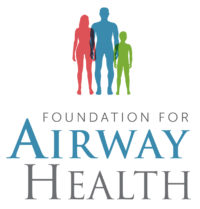Symptoms of a Tongue Tie
In my practice, I meet hundreds of tongue tied humans every year. Many of these are adults and it blows my mind how many of them only recently discovered the realm of tongue ties and the possibility that they might have one. It also saddens me when I think about how many of the tongue ties are very significant and how the person could have experienced much fewer symptoms from the tongue tie had they known about it.
Part of the problem lies in the hands of medical practitioners. It’s very hard to educate the lay public when a huge percent of trusted people (aka your doctor) give you antiquated or misguided advice.
Many of the people that I examine had their inquiry about a tongue tie poo-pooed or worse they were treated as if there was some sort of conspiracy theory about tongue ties.
Thankfully, as many of the older “non-believers” retire there will be a paradigm shift. I’m already seeing it with new dentists and practitioners who are more about the root cause than the bandaid. This helps educate people and someday, I hope that it’s less of a fight to get tongue ties diagnosed!
In the meantime, here at Impact Myofunctional Therapy we will continue our mission to bring myofunctional therapy to everyone who needs it. That begins with the task of working to educate people!
In this blog, I am unpacking the symptoms of a tongue-tie, starting with infancy. While myofunctional therapy isn’t done with babies per se, it helps to talk about the symptoms that may be present for an infant. Many of my clients had all the symptoms but truly thought they were just normal. Remember that just because something was normal or common for you, doesn’t mean it’s not concerning!
What Are the Symptoms of a Tongue-Tie?
As an infant, most of the symptoms are tied to breastfeeding: messy eating, clicking, inability to latch, fussy, gassy, colicky, nursing often, spitting up, falling asleep at the breast frequently, and failure to thrive.
Children and adults experience many different symptoms, some of which are deemed as being normal. This happens because the person suffering from the symptoms doesn’t know any other way. The eyes don’t see what the mind doesn’t know. That means that very often, a myofunctional therapy client doesn’t know that a symptom isn’t normal until it is pointed out. Adults and children may experience some of the following symptoms. (Watch Ditch the Tongue Tie to learn more about symptoms.)
Digestive issues
Many people with a tongue-tie have experienced digestive issues such as hiccuping, belching, bloating, gas, acid reflux, stomach aches, and choking. When a person has a tongue-tie, chewing and eating may not be an enjoyable experience, and some people are lazy eaters, meaning they make food choices based on the ability to chew it with the least amount of effort.
Rapid eating behaviors are common as well as inadequate chewing. Many people with a tongue-tie just want to chew the food long enough to be able to swallow it without choking.
Aerophagia is the condition that results from air swallowing. This is a common symptom for people with rapid eating behaviors and myofunctional impairment.
Read Unveiling the Secrets to Optimal Digestion and Wellness
Food texture issues and pickiness
As an infant transitions to solid foods, sometimes parents pick up on these issues, but it is often overlooked. When a child has a tongue-tie, manipulating foods with the tongue can be difficult so a child may begin to develop food and texture aversions and gag on food. Parents often respond by beginning to serve easy to chew foods, which can exacerbate the problem and lead to poor craniofacial development (because the face needs chewing to stimulate bone development).
If a child has to poke food back into the mouth with the fingers, packs food into the cheeks, avoids certain texture and hard to chew foods, favors liquid or pureed foods, gags, or becomes very picky, it is important to consider a tongue-tie.
Adults may have some of these same issues, but don’t relate it to the possibility of a tie. Many adults with a tongue-tie simply avoid foods that they don’t enjoy chewing, such as meat, raw vegetables or salads.
Chronic ear infections
When the tongue does not function properly, the swallow is affected. This often causes a problem with the eustachian tubes draining properly. Many children with tongue-ties end up having tubes placed to help with chronic ear infections.
Speech issues
Many people who seek out myofunctional therapy, have had years of unsuccessful speech therapy. The problem arises when the correct movement and position of the tongue is affected by the restriction. When the tongue is restricted by a tongue-tie, it may not be possible to form the sound correctly.
Half of the tongue muscles are responsible for the shape of the tongue, and the other half is responsible for the placement of the tongue. Both shape and placement are needed for successful speech therapy. Successfully treating a tongue-tie, and completing myofunctional therapy will set a person up for success when it comes to speech therapy.
Many people who suffer from speech challenges simply tend to talk fast to cover up speech errors, or they talk quieter and fail to project the voice. These social implications from a tongue-tie are often overlooked but have lifelong consequences. Many people who experience difficulty with speech issues tend to become antisocial because speaking and engaging is not an enjoyable task.
Parents may not realize it at the time, but it is common for a child with a tongue-tie to have a delay in speech development. Simply put, it is exhausting to use the tongue for speech, so a child simply doesn’t. Or perhaps, the child will simply avoid the difficult sounds, choosing instead to create their own version of a language.
Crowded teeth
Tongue-ties and crowded, crooked teeth are directly related to each other. When the tongue has proper mobility, it can live on the roof of the mouth like it is supposed to (correct oral rest posture). A tongue in the correct resting position becomes nature’s expander, causing the mouth to expand laterally, which allows for proper space for all of the adult teeth.
When the upper arch grows properly, the lower arch follows suit. The maxilla acts like a lid on a box and should be a bit larger than the mandible. While many people look at crowded teeth as a cosmetic issue, the concern really is a structural issue. If the bones don’t grow big enough, the teeth won’t be able to erupt correctly. Parents tend to look at a child’s crowded teeth as a genetic issue, but parents should be concerned about early tooth crowding rather than just passing it off as “having their dad’s teeth” or “the smith’s mouth”.
Read Why Is Early Orthodontic Treatment Necessary For Children?
Dental problems
The tongue is meant to be a tool, not only for speaking and chewing but also for oral cleansing. When there is a tongue-tie, the tongue cannot reach to clean the teeth, and a decay problem can result.
Overbite
In addition to growing the maxilla laterally, the tongue also helps the growth of the face forward. When a child has tongue-tie there is often an overbite where the mandible is recessed, or sloped backward. This alters the attractiveness of the face as well as causes other health concerns, such as insufficient development of the airway. When there is any difficulty getting air, often the head and chin are pushed forward creating forward head posture, which alters the structural alignment and growth of the body. Early intervention is key.
Jaw pain
TMJ pain is common in people with a tongue-tie because of how the muscles pull on each other, in addition to the tongue being held in an incorrect resting position. The tongue is released and can learn the correct oral rest posture, many complaints of TMJ pain are alleviated.
Another reason that so many people complain of jaw pain is that there is a repetitive strain on the joints and muscles because the joint often does the job of the tongue. When the chin and tongue do everything together because of a tongue-tie, the joint is overused.
Lastly, the styloglossus muscle of the tongue is the muscle that retracts and elevates the tongue. This muscle runs from the tip of the tongue to an area near the temporomandibular joint. A tongue-tie makes the movement of this muscle difficult and it very often causes jaw pain.
Chronic head and neck pain
A tongue-tie is a structural issue, which means that the effects of it are far-reaching throughout the body. The tongue is connected to so many muscles throughout the head, neck and upper body that it’s impossible for correct alignment and comfort. Adults tend to suffer from constant tension, discomfort, pain, muscle tightness, and headaches.
How To Get Started with Myofunctional Therapy
In our mission to serve everyone who wants and needs myofunctional therapy, we have several options for you to choose from. You’re the boss! We are along to support you on the path that you choose for yourself. The best way to get started is to book your comprehensive exam so that we can learn about your needs and goals for therapy. Once the exam is completed, we can lay out a perfect step by step plan for you.
We work with clients in a variety of ways from total 1:1, to a hybrid mix, to digital lessons and memberships.


Meet Carmen Woodland
Carmen found this path of passion years ago as a dental hygienist.
Her story is personal and close to home. Her sweet granddaughter, Linzee, was passed back and forth amongst doctors and therapists for years trying to figure out her speech, breathing, sleep, chewing and swallowing issues. It wasn’t until Carmen completed post graduate training that she knew Linzee’s problem was a significant tongue-tie. Bingo.
Fast forward to now. Carmen is a crusader. An international wellness warrior. A voice for those who can’t find theirs, or who don’t have one.
She left clinical hygiene practice to start Impact Myofunctional Therapy. It has evolved from a way to make a living, into an obsession!
Carmen works with clients all over the world in her practice. Carmen and her team have transformed 1000’s of lives and been instrumental in catching hundreds of cases of undiagnosed sleep apnea.
In addition, she also
- Teaches other dental hygienists, speech therapists & dentists how to become myofunctional therapists through the Myofunctional Therapy Training Academy.
- Coaches dental offices on how to implement myofunctional screening into their daily practice
- Speaks in various settings
Carmen is also an airway provider for the Foundation of Airway Health, where she works diligently for the recognition, diagnosis, and treatment of airway-related disorders.
And last but not least, Carmen is a proud member of several professional associations that afford the opportunity to learn so that she can help you. Her professional memberships include:


